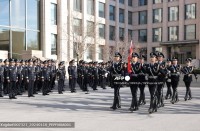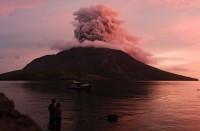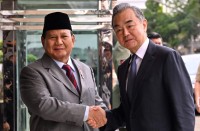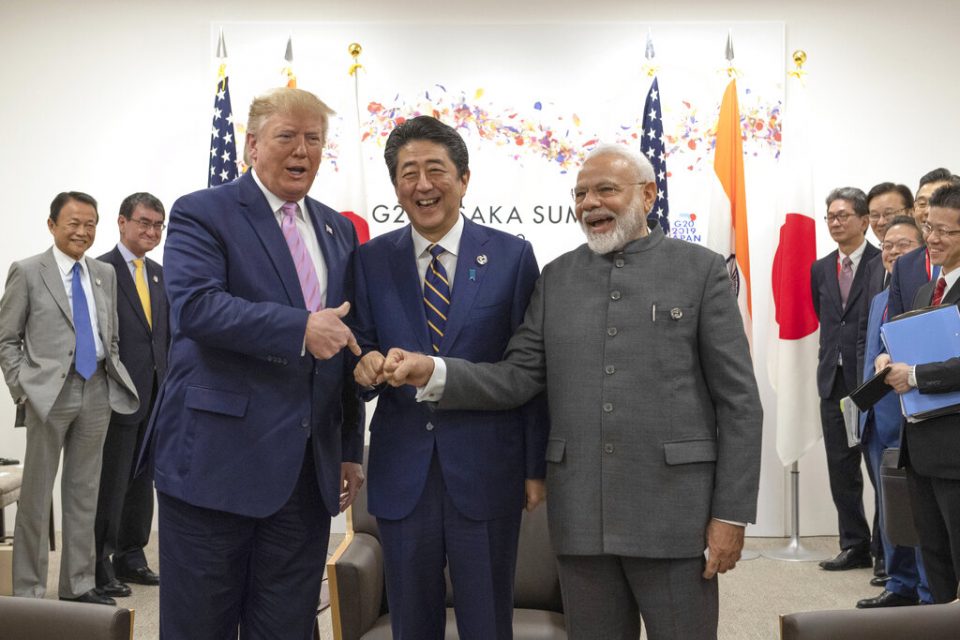
By JONATHAN LEMIRE and ZEKE MILLER
Associated Press
OSAKA, Japan (AP) — With an eye on the race back home to challenge him, President Donald Trump opened his most consequential trip of the year Friday by pushing allies on trade and defense spending at an international summit.
Trump opened the G20 summit in Japan by meeting with the host, Japanese Prime Minister Shinzo Abe, followed by Indian Prime Minister Narendra Modi and German Chancellor Angela Merkel. He sounded optimistic about inking trade deals with all three and praised alliances he has strained in the past.
With an array of world issues on the agenda, Trump could not resist weighing in on events at home: As he held meetings with these world leaders, 10 Democrats stood on a stage in Miami as part of the first debates of the 2020 presidential race.
“I just passed a television set on the way here. I saw that health care and maximum health care was given to 100% of the illegal immigrants coming into our country by the Democrats,” Trump said, turning to Merkel. “I don’t know if you saw it, it wasn’t very exciting, I can tell you… So I look forward to spending time with you rather than watching.”
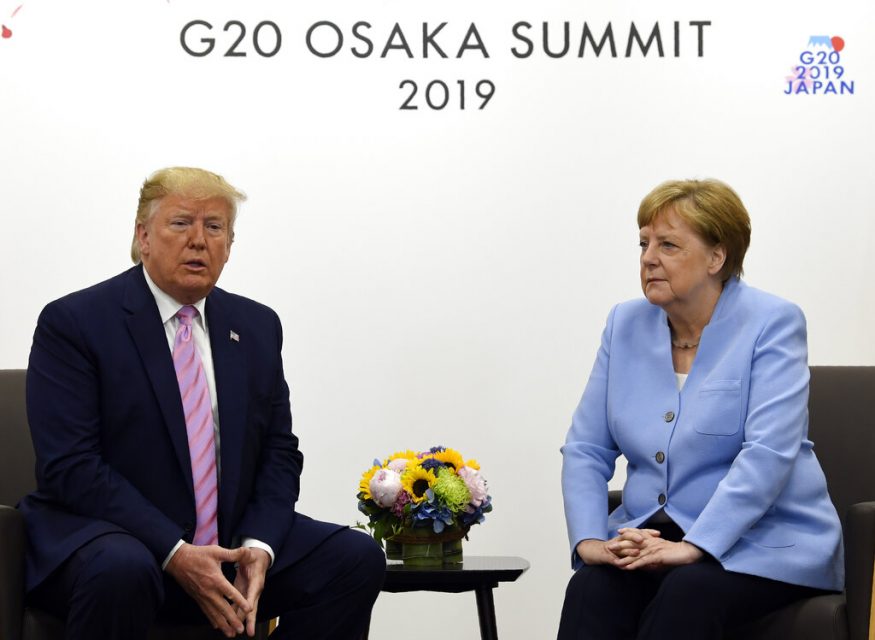
Trump was also set to meet with Russian President Vladimir Putin on Friday, their first sit-down since the special counsel found extensive evidence of Russian meddling in the 2016 U.S. election.
The president, who in the past has disrupted carefully choreographed summits by attacking allies and adversaries alike, made no public mention of his recent complaints that the U.S. military alliance with Japan is one-sided, that Germany was taking advantage of the U.S. on support for NATO and that India’s tariffs on the U.S. “must be withdrawn!”
Abe and Trump discussed trade and North Korea, while the three leaders spoke about enhanced security cooperation in the South China Sea and Huawei, the Chinese telecommunications giant that Trump has put on a blacklist and is viewed as a national security threat because of the possibility that its equipment could be used for cyberespionage.
And earlier, as Abe officially received Trump, the president waved over his daughter Ivanka Trump and son-in-law Jared Kushner, both senior White House aides, to pose with him for the official welcome photo. Trump and Abe were later joined by Modi, who a day earlier was the target of a Trump tweet complaining about tariffs. The portion of the meeting open to reporters was convivial: at Trump’s urging, the three leaders engaged in a group fist bump.
But the day’s main event will be Trump’s first public meeting with Putin since the Helsinki summit last July in which Trump refused to side with U.S. intelligence agencies over his Russian counterpart.
Trump said in advance that he expected a “very good conversation” with Putin but told reporters that “what I say to him is none of your business.” His aides have grown worried that Trump could use the meeting to once again attack special counsel Robert Mueller’s probe on the world stage, particularly since Mueller recently agreed to testify before Congress next month.
Senate Democratic leader Chuck Schumer pressed the president to directly challenge the Russian leader on election interference and send a signal “not merely to Putin but to all of our adversaries that interfering with our election is unacceptable, and that they will pay a price — a strong price — for trying.”
The United States and Russia are also on opposing sides of the escalating crisis with Iran, which shot down an American drone last week. Trump nixed a possible retaliatory air strike and stressed Friday that the “there’s no rush. There’s absolutely no time pressure” to ease the tension with Tehran.
Trump’s meeting with Putin will be the leaders’ first extended conversation since the two met in Finland, nearly a year ago. That’s when Trump set off an uproar by declining to say he believed the U.S. intelligence services’ conclusions over Putin’s denials of election interference.
The Mueller report did not establish a criminal conspiracy between Trump associates and the Kremlin to sway the outcome of the election. The finding lifted a cloud over the White House even as tensions have increased between Washington and Moscow. While Trump has long placed a premium on establishing close personal ties with Putin, his government has increased sanctions and other pressures on the Russian government.
At a summit last November in Argentina, Trump canceled what would have been the leaders’ first post-Helsinki meeting after Russia seized two Ukrainian vessels and their crew in the Sea of Azor. Those crew members remain detained, yet Trump — who did briefly greet Putin in Buenos Aires — has opted to forge ahead with the meeting, which will likely include discussions about hotspots in Iran, Syria and Venezuela, as well as nuclear weapons.
The leaders last year announced their withdrawal from a key arms control pact, the 1987 Intermediate-Range Nuclear Forces Treaty. It is set to terminate this summer, raising fears of a new arms race. Another major nuclear agreement, the New Start treaty, is set to expire in 2021 unless Moscow and Washington negotiate an extension. Along with arms control frictions, Russia’s annexation of Crimea and its support for a separatist insurgency in eastern Ukraine also weigh heavily on Russia-U.S. relations.
But the backdrop, as always, will be Russia’s 2016 election interference.
Putin has denied that Russia meddled in the American election to help Trump win, even though Mueller uncovered extensive evidence to the contrary. That included a Russian military intelligence operation to break into Democratic Party emails and efforts by a “troll farm” to spread divisive rhetoric and undermine the U.S. political system by using phony social media accounts.
At the news conference that followed the Helsinki summit, Trump responded to a reporter’s question by declining to denounce Russia’s election interference or side with his own intelligence agencies over Putin. The two men also spent more than two hours in a private meeting in Helsinki with only their interpreters present; some U.S. intelligence officials were never briefed on the discussions.
For Trump, the Putin meeting comes amid a gauntlet of negotiations on international crises, trade wars and a growing global to-do list.
Trump landed in Osaka on Thursday amid a tropical cyclone that is predicted to turn into a typhoon — a possible metaphor for the four days of high-stakes diplomacy that lie ahead. As his re-election bid heats up, Trump was eager to produce breakthroughs on a series of foreign policy challenges including the showdown between the U.S. and Iran, a trade war with China and stalled nuclear talks with North Korea.
The summit will be a test of Trump’s go-it-alone style as well as his “America First” doctrine that has frustrated traditional allies over disputes on defense spending and trade and set the United States apart from global consensus on how to deal with international concerns like climate change and Iran’s nuclear program.
___

